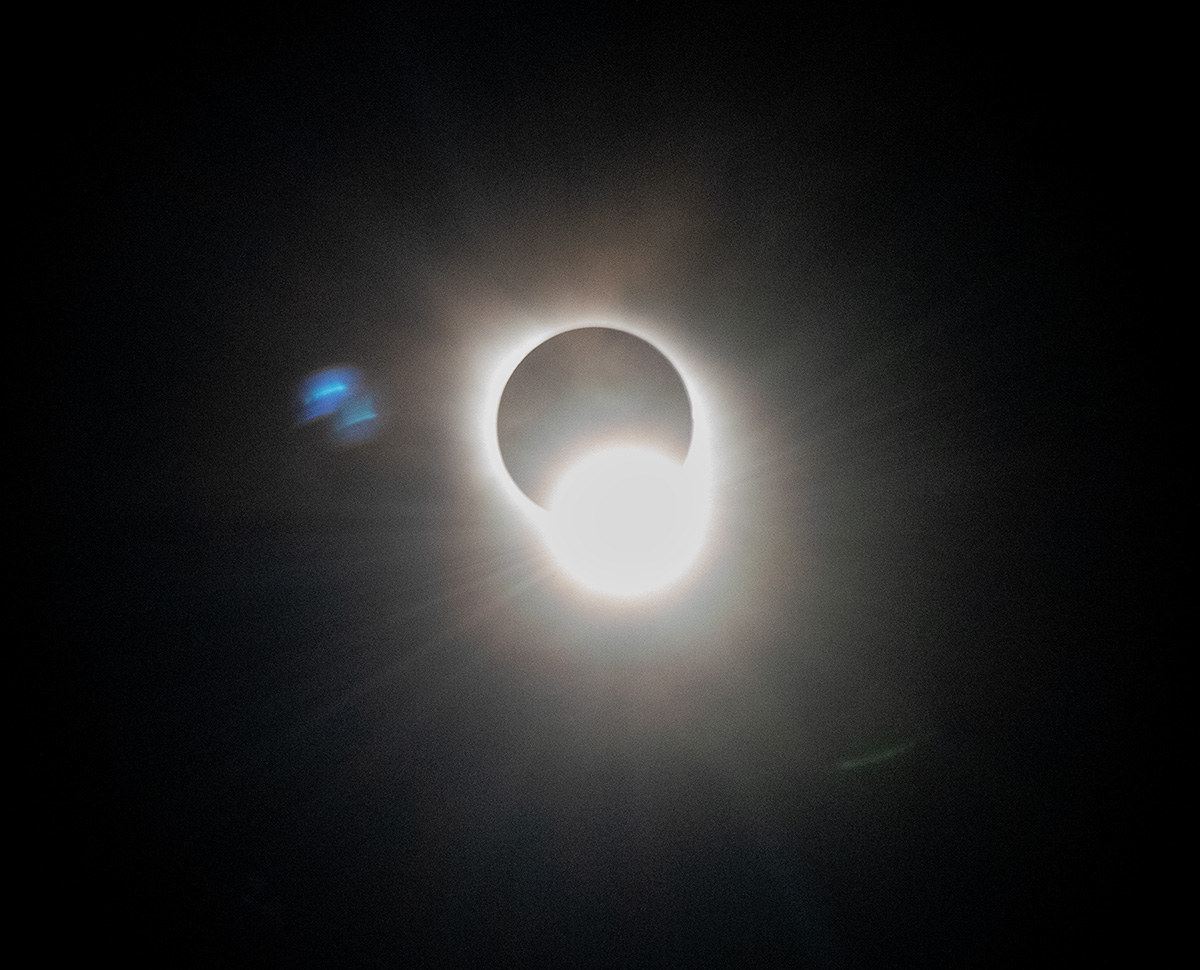Eclipses are Geoengineering Experiments
The eclipse cooling phenomenon gives opportunity to study how geoengineering cooling affects our environment. When 15 percent of the sun is eclipsed, obvious cooling changes begin to happen beneath the shadow of the eclipse. This effect is what this new research is about. Cooling does more than just cool, it causes clouds to evaporate. Our viewing of the eclipse went from sporadic and very short views beneath cloud cover every 3 to 5 minutes, to zero clouds during totality. Much can be learned about geoengineering from eclipses. The cover image for this post was of the diamond ring effect just after totality in Georgetown, Texas.
Trees et al., Clouds dissipate quickly during solar eclipses as the land surface cools, Nature Communications – Earth and Environment, February 12, 2024.
Link to paper here.
(Note: See MeltOn’s photo gallery of the eclipse here…)
(Abstract) “Clouds affected by solar eclipses could influence the reflection of sunlight back into space and might change local precipitation patterns. Satellite cloud retrievals have so far not taken into account the lunar shadow, hindering a reliable spaceborne assessment of the eclipse induced cloud evolution. Here we use satellite cloud measurements during three solar eclipses between 2005 and 2016 that have been corrected for the partial lunar shadow together with large-eddy simulations to analyze the eclipse-induced cloud evolution. Our corrected data reveal that, over cooling land surfaces, shallow cumulus clouds start to disappear at very small solar obscurations (~15%). Our simulations explain that the cloud response was delayed and was initiated at even smaller solar obscurations. We demonstrate that neglecting the disappearance of clouds during a solar eclipse could lead to a considerable overestimation of the eclipse-related reduction of net incoming solar radiation. These findings should spur cloud model simulations of the direct consequences of sunlight-intercepting geoengineering proposals, for which our results serve as a unique benchmark.”


